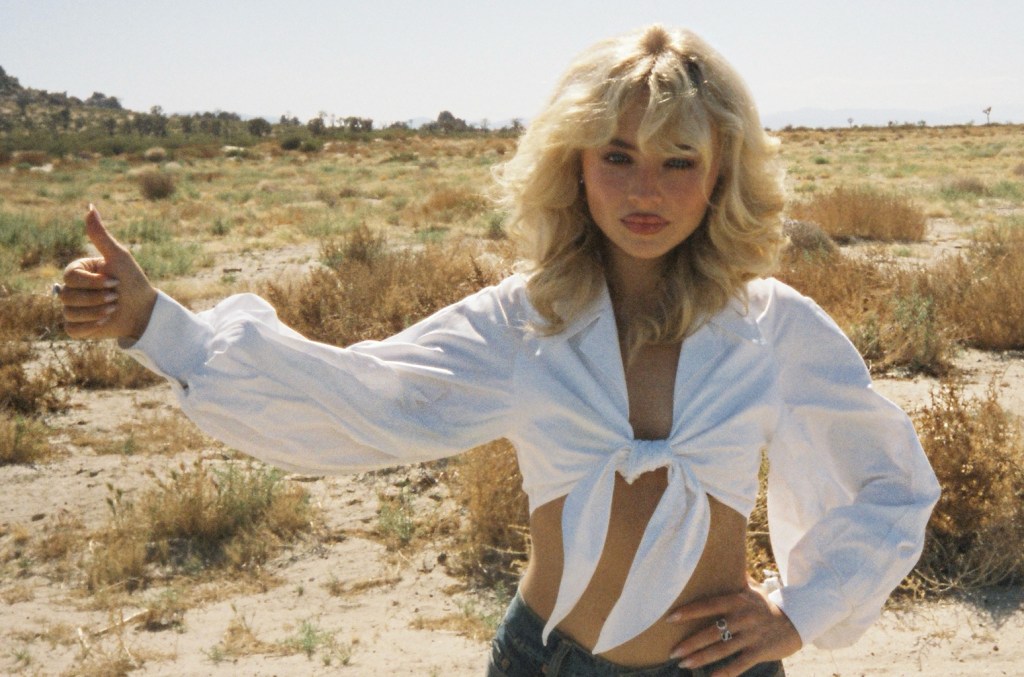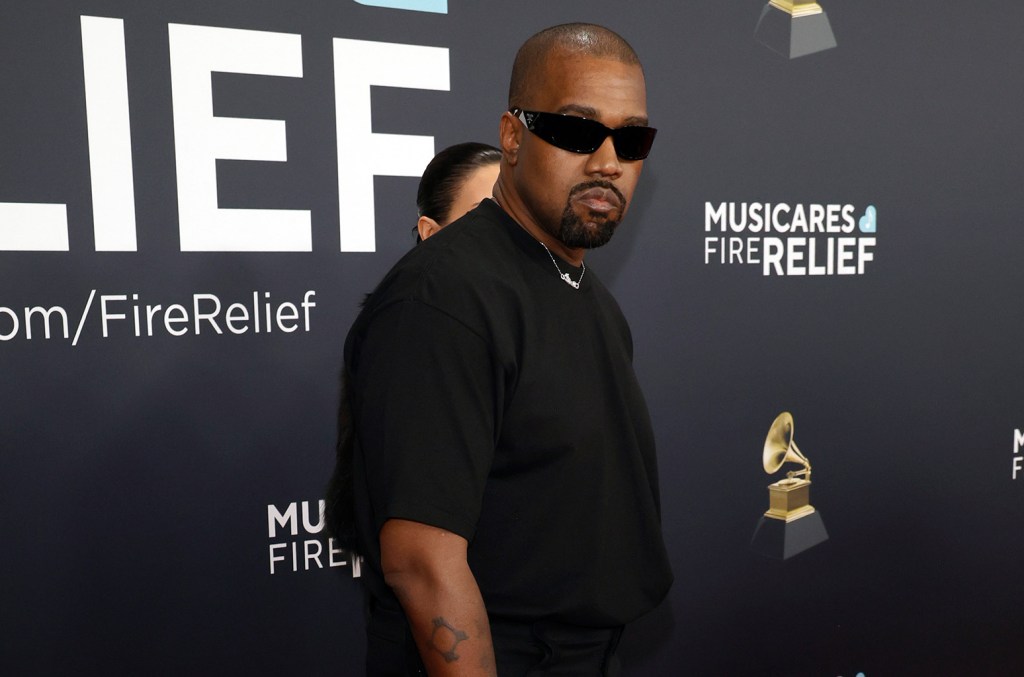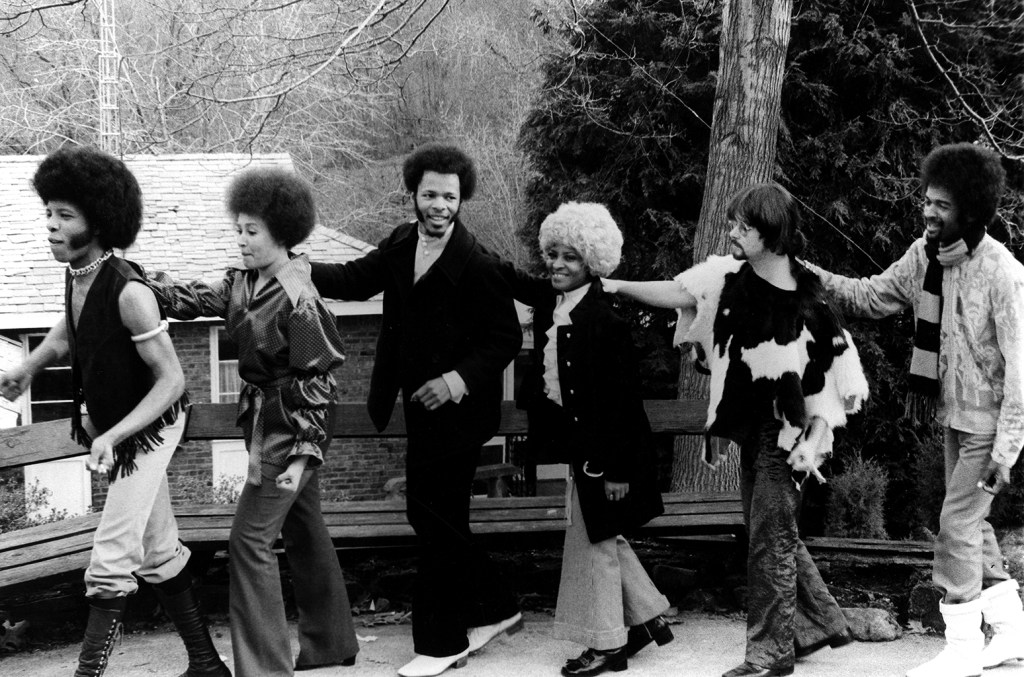Music
Page: 155
This week, Billboard’s New Music Latin roundup and playlist — curated by Billboard Latin and Billboard Español editors — features fresh new music, including Grupo Frontera’s surprise EP Y Lo Que Viene and Buscabulla’s LP Se Amaba Así, to name a few. Explore See latest videos, charts and news See latest videos, charts and news […]
Pulp has scored its first No. 1 on the U.K.’s Official Albums Chart in 27 years with eighth LP More (June 13). The Jarvis Cocker-led band previously had two chart-toppers to its name (1995’s Different Class and 1997’s This is Hardcore), and a number of top 10 placings throughout its career: 1994’s His ‘N’ Hers […]
After three months, Alex Warren’s reign atop the U.K.’s Official Singles Chart has come to an end as Sabrina Carpenter ousts him from the No. 1 spot (June 13). His spell was broken by Carpenter’s “Manchild,” which achieved the feat with 6.8 million streams in its opening week. The song and its playful video were […]
Nicki Minaj has received a formal apology from Shannon Sharpe after the rapper dissed him on Lil Wayne‘s “Banned From NO (Remix).” In the latest episode of Sharpe’s Nightcap podcast, the NFL legend said he was sorry to Minaj, and explained how their misunderstanding led to him being name dropped on Weezy’s new track. “Bout […]
Ye — the rapper formerly known as Kanye West — has shown up to Sean “Diddy” Combs’ federal trial in New York City, pulling up to the courthouse in an all-white outfit Friday (June 13).
In footage shared by TMZ, the Yeezy founder steps out of the backseat of a car and walks inside, shaking a couple hands and throwing up a small wave on his way. In addition to a matching white denim jacket-and-jeans set, he sports a pair of sunglasses.
According to Variety, Ye told one journalist that he had come to show support for the disgraced Bad Boy Records founder. The publication also reports that West’s name had been included in a questionnaire for potential jurors to test whether they were familiar with any of the “hundreds of celebrities and people in Combs’ orbit.”
Combs has been on trial since May on allegations of sex trafficking and racketeering, with federal prosecutors accusing him of running an elaborate criminal enterprise aimed at facilitating his so-called freak-offs — drug-fueled events wherein he allegedly forced people, including his ex-girlfriend Cassie Ventura, to have sex with male escorts while he allegedly watched and masturbated. His legal team has denied all of the charges, with Combs’ attorney Teny Geragos telling the jury in opening statements a few weeks ago: “Sean Combs is a complicated man, but this is not a complicated case. We take full responsibility that there was domestic violence. Domestic violence is not sex trafficking.”
If convicted, Combs faces life in prison.
A few days prior to Ye’s appearance at the trial, Combs’ legal team’s motion for a mistrial was denied. The defense had tried to claim that the prosecution had knowingly introduced false testimony by Bryana Bongolan – a witness who last week alleged that Combs had dangled her from a 17-story balcony in 2016 — but Judge Arun Subramanian ultimately ruled: “This is not fodder for a mistrial. This is the adversarial process at work.”
Ye has previously shown support for Combs amid the latter’s legal issues, with the former asking President Donald Trump to “please free my brother Puff” on X in February. Combs had already spent months in custody at that point following his September arrest.In March, Ye dropped a song titled “Lonely Roads Still Go to Sunshine” that appeared to feature Combs’ voice on a phone-call recording. “I just want to thank you so much for just taking care of my kids, man,” the voice seemingly belonging to Diddy said in the snippet. “Ain’t nobody reach out to them, ain’t nobody call them.”
Ye replies on the track: “Absolutely, I love you so much, man. You raised me. Even when I ain’t know you, know what I’m saying?”
The two hip-hop titans also worked together in the past, both appearing on Ty Dolla $ign’s “Guard Down” in 2015. In 2022, Ye presented Combs with the Lifetime Achievement honors at that year’s BET Awards.
This beef between Drake and Kendrick Lamar may last forever like the beef between 50 Cent and Ja Rule has. On Thursday night (Jun. 12), the Grand National Tour had its first of two back-to-back shows in Drake’s hometown of Toronto and it didn’t disappoint in the drama department. The Compton rapper performed his knockout […]
New Music Latin is a compilation of the best new Latin songs and albums recommended by Billboard Latin and Billboard Español editors. Check out this week’s picks below.
Explore
Explore
See latest videos, charts and news
See latest videos, charts and news
Grupo Frontera, Y Lo Que Viene (Grupo Frontera)
Following Mala Mía, the joint EP with Fuerza Regida that dropped last December, Grupo Frontera surprises fans with a new five-track EP called Y Lo Que Viene (and what’s coming). The set kicks off with the Carín León-assisted “Mutuo,” a country-tinged norteño song where they chant about unreciprocated love. In the following tracks, “La Buena Eras Tú” with Netón Vega and “¿Qué Haces Por Acá?” with Mister Chivo, the Texas-based group delivers two refreshing cumbia tunes. “No Se Parece a Ti,” the only solo track on the set, is a weeping Tejano highlight where frontman Payo Solís compares his “perfect” new girlfriend with his “unforgettable” ex. Meanwhile, in a second collaborative effort, Frontera teamed up with Manuel Turizo for “La Del Proceso” — a soft cumbia single that effortlessly transitions into a thumping electro-merengue groove.
With the release of Y Lo Que Viene, Frontera pledges a portion of all proceeds to support the Latin community during the ICE raids. “In light of the ongoing events across the country and the injustices faced by our fellow immigrants, we feel a deep responsibility to use our platform and music to make a difference […] We will be donating a percentage of all proceeds to organizations on the frontlines, fighting for and supporting our communities. We also encourage our listeners to take action — whether that means donating, protesting, educating others, or simply showing up for those in need. Every voice matters,” the group expressed on their Instagram stories on the eve of release date. — JESSICA ROIZ
Trending on Billboard
Hamilton, “Y Por Ahí Me Dicen y Que” (Cigol Music Group)
Cartagena native Hamilton shares his inspiring life story in his new song “Por Ahí Me Dicen y Que” (“They Tell Me So What”). Produced by Jao Beats, with a soft melody that accompanies his heartfelt interpretation, the artist reflects on his humble origins and expresses gratitude for living what was once just a dream. The song becomes an anthem to perseverance, faith in God, and staying authentic, leaving a powerful message that not giving up has its rewards. In a statement about the release, Hamilton says the song is linked to Juneteenth: “I’m Black and I’m Colombian, and I grew up with few resources, but now I have a different life, and I want other Black artists to know that they can achieve their dreams too.” — LUISA CALLE
Buscabulla, Se Amaba Así (Domino Recording)
On Se Amaba Así, Buscabulla turns inward, examining love, connection, and perception through a kaleidoscope of Latin and tropical influences filtered with ethereal synth-pop precision. The Puerto Rican duo’s second album — its first in five years — sees co-founders Raquel Berrios and Luis Alfredo del Valle dive deeper into their intimate reflections on modern relationships, infusing stories of romantic struggles with pulsating basslines and dreamy melodies.
The collection’s opening track, “El Camino,” sets the stage with warped disco guitars and laid-back percussion, its mellow sound belying the song’s emotional intricacies. Meanwhile, pre-released single “Te Fuiste” marries a calm yet persistent beat with cascading synths that wash over listeners, inviting them to linger in its serene melancholy. And the focus track, “Miraverahí,” delivers syncopated, thumping bass lines beneath Berrios’ breathy, celestial vocals, exploring the disorienting shifts in love and connection — all while keeping the rhythm alive.
Throughout the 10 tracks, Buscabulla demonstrates its knack for transporting listeners to lush soundscapes that feel intimate yet expansive. While much of Se Amaba Así orbits concepts of vision — understanding the past, assessing romance, imagining the future — the duo keeps listeners tethered with grooves and textures that ground its self-reflective musings. — ISABELA RAYGOZA
Judeline, “Chica de Cristal” (Interscope Records)
After making her U.S. debut at Coachella earlier this year, the Spanish-born singer-songwriter is making waves with “chica de cristal,” a gorgeous song that perfectly captures Judeline’s melodic dream-pop essence. Produced by LILCHICK, Sacha Rudy, Tuiste and Gese Da O, Judeline embraces nostalgia as she explores the emotions left behind after a breakup. Her disarming, ethereal vocals soar as a subtle-yet-intentional drum beat sets the tone for this moody track. Judeline released her debut album Bodhiria last year via Interscope, and most recently had released “Tú Et Moi” (featuring Brazilian funk carioca artist Mc Morena), where she sings in Spanish, French, and Portuguese. — GRISELDA FLORES
La Nueva Ola de Cumbia & La Coreañera, “Cumbiando” (Veo Sonora/Universal Music México)
Los Angeles-based collective La Nueva Ola de Cumbia features Tejano accordionist La Cumbiañera on “Cumbiando,” a revamped and upbeat version of the 1980s classic “Bailando,” by Spanish group Alaska y Los Pegamoides. Clearly inspired by icons like Chico Che, Los Ángeles Azules and even Celso Piña, this highly danceable track combines vallenato, pop, hip-hop, and reggaetón, while always respecting cumbia. This innovative Latin-flavored offering is the result of the fusion of cultures among the members of La Nueva Ola de la Cumbia: the voice of Colombian singer Chelyn Dion; the guitar and bass of Mexicans Luzio “El Sucio” Nava and Primitivo Ríos; the timbales of Nicaraguan Tacho Vázquez; the percussion of Peruvian Wereke Valdivia; and the drums of Hipólito Madero. In case this musical madness was missing an extra touch, the group wears Mexican wrestling masks as part of its wardrobe in the fun music video. — TERE AGUILERA
Check out more Latin recommendations this week below:

Serbia’s long-running EXIT Festival says that this summer’s edition of the event might be its last in the country.
The electronic event reports that its government funding and cultural grants have been revoked due to the festival publicly aligning with student-led anti-corruption protests that happened after the Novi Sad railway station collapse in November 2024, a tragedy that killed 15 people. The festival also says its sponsors have withdrawn due to pressure by pro-government entities.
“This is the hardest decision in our 25-year history but we believe that freedom has no price,” EXIT founder and director Dušan Kovačević says in a statement provided to media and posted to EXIT’s social channels. “With this act we are defending not only EXIT but the fundamental right to free expression for all cultural actors around the world. We invite them to stand with us in this fight.”
EXIT Festival is set to happen July 10-13 in Novi Sad, Serbia. The lineup features Tiësto, The Prodigy, Eric Prydz, Solomun, DJ Snake and many others.
Trending on Billboard
The event has a long history with pro-democratic movements, starting in 2000 as a pro-student movement meant to fight for freedom in Serbia and the Balkan countries. Happening at the Petrovaradin Fortress in the city of Novi Sad, the festival has won myriad awards that have distinguished it as one of the top festivals in Europe.
“Through music, creativity, and activism, EXIT has connected generations and nations, rebuilt broken ties, and built bridges where others route to divide,” Kovačević’s statement continues. “We have brought numerous European festival awards to our country and region, along with hundreds of millions of Euros in tourism revenue and international recognition that global experts consider invaluable.
“However, ever since we publicly stood with the students of Serbia in their fight for a freer and more just society, we have been subjected to immense financial and political pressures aimed at stripping us of our fundamental rights to freedom of thought and expression. Despite being completely cut off from public funding at all levels of government, and with some sponsors forced to withdraw under state pressure, we refuse to be silenced. As a result, this year’s anniversary edition will be the last to take place in a Serbia where freedom of speech is systematically suppressed.”
Forever No. 1 is a Billboard series that pays special tribute to the recently deceased artists who achieved the highest honor our charts have to offer — a Billboard Hot 100 No. 1 single — by taking an extended look back at the chart-topping songs that made them part of this exclusive club. Here, we honor Sly Stone, who died on Monday (June 9) at age 82, by looking at the final of Sly & the Family Stone’s three Hot 100-toppers: the joyous but fractured “Family Affair.”
True to its name, Sly & the Family Stone had been the ultimate musical family affair. Of course, it literally comprised multiple siblings — Sly Stone (originally Sylvester Stewart) was of course the band’s brilliant leader and de facto frontman, while brother Freddie sang and played guitar, sister Rose sang and played keys, and sister Vet even occasionally filled in for Rose on tour. But it was the band’s familial spirit that originally sparked its jump-off-the-stereo brilliance, a palpable sense of shared love, excitement and unity. The on-record and on-stage product reflected the band’s real-life late-’60s closeness, as a Bay Area-based unit that happily did everything together: In 2025’s Questlove-helmed Sly Lives documentary, the group waxes nostalgic about how they’d all ride bikes together, watch movies together, even buy dogs together. “I think we spent more time together than we spent with our family members,” recalled trumpeter and singer Cynthia Robinson.
Trending on Billboard
By 1971, the band was decidedly no longer doing everything together, and much of what they did was less than happy. As the band became superstars in 1969, and Sly Stone one of the leading voices and faces of popular music, internal pressures and tensions mounted, outside demands intensified both about their recorded output and their political positioning, and Sly began to retreat. He moved from San Francisco to Los Angeles, self-medicated heavily with drugs, came late to gigs or no-showed altogether, and generally began to isolate himself from the rest of the group. The group’s final single of the ’60s, the double-A side “Thank You Falettin Me Be Mice Elf Agin”/”Everybody Is a Star,” had been a 1970 No. 1 hit, but already displayed a growing disillusionment with the skyrocketing success of the band’s Stand! and “Everyday People” days. It would be the previously prolific outfit’s final release for nearly two years.
When Sly & the Family Stone returned in late 1971, it was with “Family Affair,” an R&B gem that was at once of a piece with the celebratory pop-soul anthems the group had made his name with, and sounded like a different outfit altogether. Though the song still felt warm, soothing and hooky as hell, the group’s earlier spirit of triumph, jubilation, defiance, energy and above all, togetherness, had largely disappeared. Even “Thank You,” for all its creeping darkness, still felt like the band was all in the fight together; by “Family Affair,” they barely sounded like a band at all.
In fact, the most bitterly ironic thing about “Family Affair” — which served as the lead single from that November’s There’s a Riot Goin’ On LP — is that Sly is the only member of the Family Stone to actually play on it. (Probably, anyway; the Riot sessions were so messy and hazy that no one seems 100% positive of exactly who did what.) Rose does sing the song’s iconic chorus, but instrumentally, the song is nearly all Sly, with additional electric piano by star keyboardist Billy Preston and some guitar croaks from rising soul hitmaker Bobby Womack. The Family Stone’s leader most likely provided the rest, including all the verse vocals, bass and additional guitar.
The final instrument played by Stone on the track was the newest and perhaps most important to the musical direction of “Affair” and Riot in general: the Maestro Rhythm King MRK–2. Drummer Greg Errico had gotten fed up with the discord within the group and left earlier in ’71 midway through the Riot recording; rather than immediately replace him with a new stickman, Stone decided to fill out the remaining tracks with the rudimentary early drum machine and its genre presets. But he allowed the machine to work for his purposes by essentially slotting its canned bossa nova rhythm askew within the song’s groove — like J Dilla might have done decades later — giving the liquid-funk shuffle of “Family Affair” a little extra slipperiness. Even Errico, with every reason in the word to take offense at essentially being replaced by an underqualified robot, had to give it up to the bandleader for his innovation: “[He] took the rhythm that [the machine] was producing and turned it inside out,” the drummer raved in Sly Lives! “It made it, ‘Oh, that’s interesting now.’ And he actually crated an iconic thing with it. It became a game-changer again.”
Sly & the Family Stone, Forever No. 1: “Everyday People” (1969) / “Thank You Falettin Me Be Mice Elf Agin” (1970)
The song’s untraditional groove was matched by a near-unrecognizable Sly Stone vocal that almost felt like just another instrumental texture. Previous records had featured his clear vocal piercing through his productions with shout-along sentiments, or as one voice among many in delivering strength-in-numbers statements. This was new: a heavily filtered Stone seemingly singing from a remote corner of the studio, feeling more like a disembodied narrator than a leading man. What’s more, his singing register had dropped, as if he’d aged multiple decades (or gone through a second puberty) in between Stand! and Riot, with the result landing Stone somewhere between crooning and sing-speaking.
The vocals were jarring, but so were the lyrics. In 1969, a “Family Affair” would be an occasion for joy and revelry, but by 1971, it was a little more complicated — and the family portrait painted by Stone was of a largely dysfunctional unit, with siblings who head in different directions, newlyweds with maybe-straying eyes, and fraught emotions running high all around. “You can’t leave ’cause your heart is there/ But, sure, you can’t stay ’cause you been somewhere else,” Stone sings of his own conflicted feelings in the song’s most revealing passage. “You can’t cry ’cause you’ll look broke down/ But you’re cryin’ anyway ’cause you’re all broke down.”
But downers don’t usually become No. 1 hits — and indeed, despite the heavy dynamics of this “Family Affair,” the ultimate feeling is still more one of welcoming than of alienation. Partly, that’s because of the gleeful boogie Preston’s plush keys and Sly’s aqueous guitars do around the song’s rain-slicked beat, and largely, that’s because Rose’s “It’s a family affaaiiiiii-iiiiirrrr…” callouts — the first vocals of any kind you hear in the song — are so comforting and inviting that it can’t help but rub off on the rest of the song. But it’s also because, even with Sly’s clearly mixed feelings about his own place within the family, he still feels audibly connected to it; it’s a complex relationship, but still a loving one at heart. “Blood’s thicker than the mud,” he proclaims early in the song, and despite everything, he sounds like he means it.
Unfortunately, the Family Stone had already begun to splinter. Errico was the first out the door, the next year, bassist Larry Graham followed. As the band began to lose its center and as Sly’s productivity and reliability both stalled, so did its commercial success: the long-awaited There’s a Riot Goin’ On topped the Billboard 200 and is hailed today as a classic (despite drawing mixed reviews at the time for its murky production and disjointed jams), but “Family Affair” was its only single to even reach the Hot 100’s top 20. Fresh, released in 1973, saw the band returning to greater accessibility, and kept up its streak of classic lead singles with the slithering “If You Want Me to Stay.” But even that song missed the top 10, and as acolytes like the Ohio Players and Parliament-Funkadelic had replaced the band at funk’s forefront, the Family Stone’s relevance continued to slide until officially splitting in 1975.
Considering Sly Stone was just 32 when the Family Stone dissolved for the first time, it feels both deeply sad and highly improbable that his career never really found a proper second act. But Sly’s subsequent attempts throughout the late ’70s and ’80s to launch a solo career or revive the Family Stone with a new lineup largely fell on deaf ears; even a seemingly world-stopping (or at least potentially career-re-sparking) collaborative endeavor alongside P-Funk leader George Clinton fell into disarray and resulted in an album that was mostly dismissed critically and commercially. Drug abuse continued to take its toll on an increasingly reclusive Sly, and despite sporadic reappearances over the last four decades, a true comeback was never really in the cards for the music legend.
But even if his own presence was minimal over the past half-century, the impact of Sly Stone’s music remained seismic. Outside of setting the early standard for what would become funk’s golden age in the early ’70s, the Family Stone’s catalog remained one of the most well-mined sample sources across the ’80s and ’90s for N.W.A, LL Cool J, the Beastie Boys, Cypress Hill, Beck, Janet Jackson and countless other game-changing acts. And that impact certainly endured into the 21st century: In the first couple years of the ’00s alone, D’Angelo released the massively acclaimed and heavily Riot-inspired Voodoo, while OutKast referenced that album’s bullet-ridden American flag imagery on the cover to their universally beloved Stankonia, and Mary J. Blige had a Hot 100 No. 1 with a “Family Affair” of her own. As messy as things could ever get with Sly Stone or his legacy, the blood would always remain thicker than the mud.
Riley Green banks his third chart-topper on Billboard’s Country Airplay chart as “Worst Way” (Nashville Harbor) rises 3-1 on the list dated June 21. It increased by 13% to 28.4 million audience impressions in the June 6-12 tracking week, according to Luminate. Explore Explore See latest videos, charts and news See latest videos, charts and […]

 State Champ Radio
State Champ Radio 







